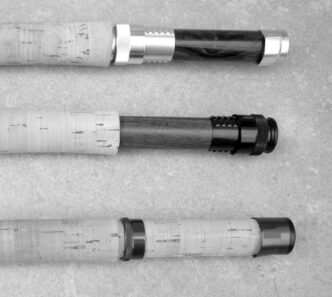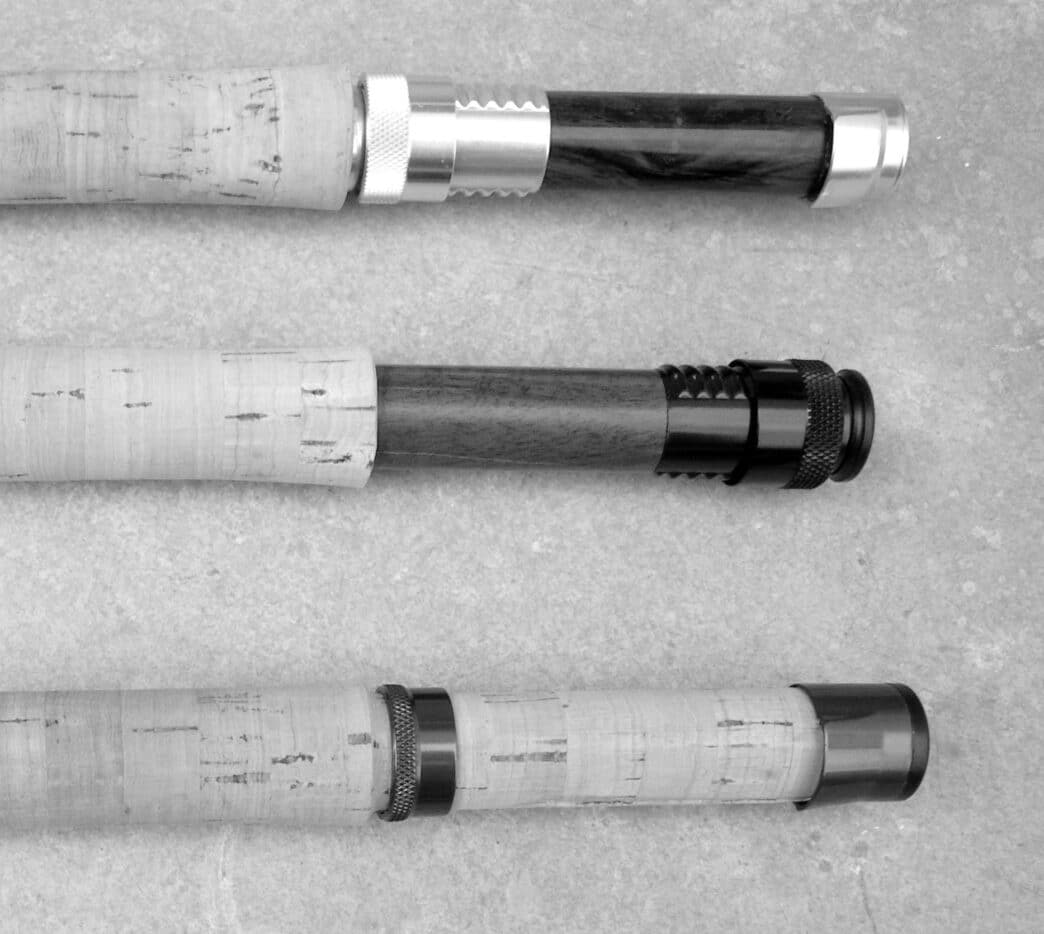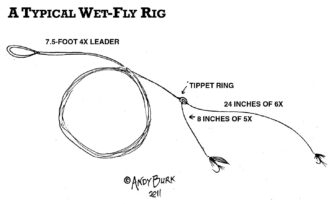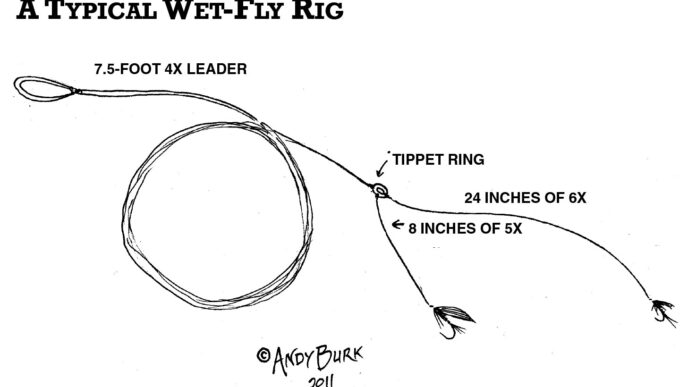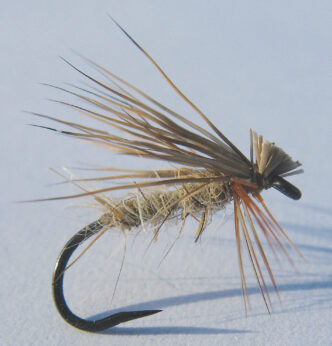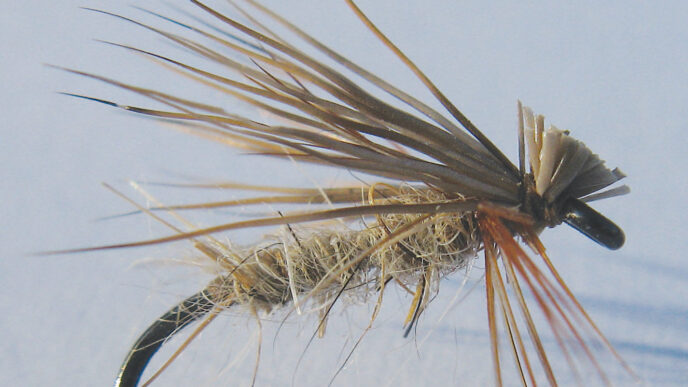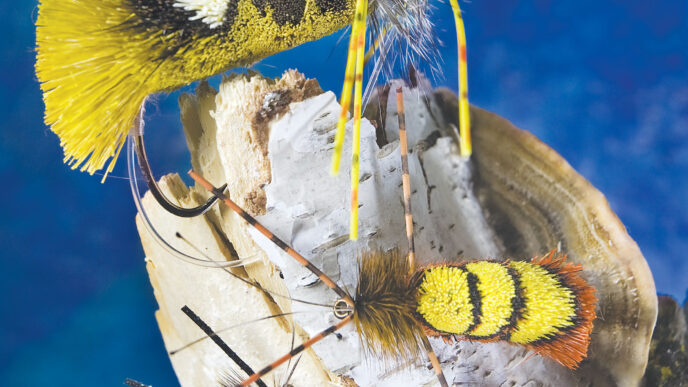When fly fishers talk about rods, chances are they’ll focus on how the rod casts, on the material from which it’s made, and on how, in general, it looks. What we don’t hear about much, though as buyers and anglers we’re certainly sensitive to the subject, are the characteristics of the components that turn a rod blank into a fly rod. Manufacturers, however, spend a lot of time thinking about and sourcing components. They do so for any number of reasons, from hitting a specific price point, to a desire to use the latest or the best stuff available, to simply going for a particular look. Let’s consider the things that go into turning a rod blank into a fly rod.
Reel Seats
There’s a mind-boggling variety of reel-seat options out there, from the spartan to the ridiculously gaudy, but they break down in general to slide-band versus screw-locking seats, uplocking versus downlocking seats, and all-metal seats versus metal seats with a spacer of some other material. (And if the seat is metal, what metal, and if there’s a spacer, from what material is it made?)
Slide-band or slide-ring seats tend to be used on lighter rods as a weight-saving device, though a number of pretty beefy bamboo rods, including some Spey rods, used them to good effect. Slide-band seats hold the reel in place from friction and pressure between the slide ring or rings and the reel foot and material along which the bands slide. Versions with two rings that capture the reel foot from either end seem to me less secure than those in which one slide band secures one end of the reel foot while the other end is slotted into a fixed pocket of some kind. If the fixed pocket is at the base of the rod, gravity also helps hold the reel in place.
Spacers for slide-band seats can be either wood or cork. The ideal wood spacer for a slide-band reel seat is one that doesn’t expand and contract much when wet, such as teak, though that’s a pretty plain-looking wood. Absent that characteristic, a wood slide-band seat needs a finish that completely seals it from moisture. One friend left a reel on a slide-band-seated rod in a humid Alaska camp for a week and had to cut the slide ring off to remove his reel when the week was up. Cork is a fine material for a slide-band seat if the cork rings that form the seat are glued securely to each other and to the blank. The ring will generally press the foot a bit into the cork, holding it not simply by friction, but also by a kind of natural spring pressure. After long use, most cork slide-band seats will show a permanent depression from the reel foot, but if you don’t like the look, or if the fit has become looser than you like, you can usually steam it out, expanding the cork’s open pores and bringing the cross section back to its original diameter. Some slide-band seats are mortised to the shape of the underside of the reel foot, while others are cut to a wide radius or even a flat. The mortised and wide radiused seats are the most secure, the flat ones the least.
Screw-locking seats are heavier, but more secure than slide-band seats, particularly with heavier reels. They use the mechanical advantage of a threaded lock nut behind a hood that slides along the barrel/spacer of the reel seat (or a combined nut/hood) to press the reel foot onto the barrel of the seat and up or down into a fixed pocket. Very narrow threads look pretty, but more widely spaced threads make for a quicker and very secure lock.
Locking seats on most modern freshwater rods almost always use a wood spacer, and I suspect that’s because anglers expect to see a piece of wood there. Many inexpensive rods now sport wood-spacer reel seats, blurring the distinction between top-line rods and entry-level ones — a distinction that’s already been blurred by the surprising performance of the latter. There’s a weight advantage to having a wood or cork spacer between the fixed hood and the threaded barrel of a locking seat, but it’s not monumental. The fancier the wood, however, the greater the cost of the reel seat and therefore of the rod, so you likely won’t find cocobolo or fiddleback maple on a cheap rod.
Nickel silver (an alloy of nickel and copper) is another mark of many expensive rods, even though reel-seat fittings of aluminum work just as well. Some rods use aluminum seats plated to look like solid nickel silver to provide a pricey look at a lower cost. They tend to be lighter than real nickel silver, but they don’t have the same luster or cachet.
All-metal seats today usually are found on saltwater rods, and they’re generally of anodized aluminum. Washed off carefully after a day in the salt, they won’t corrode and will stay looking good for a long time. That isn’t true of either nickel silver or unanodized aluminum when used in the salt. Both materials oxidize very quickly. Of course, if you’re feeling flush, you can find seats of machined titanium, which is totally saltwater proof, but they cost at least twice as much as aluminum seats, and I don’t know of any maker currently using titanium on factory rods.
If you’re tight with a buck, the nylon seats (manufacturers call it “graphite”), originated by Fuji in Japan and now copied by everyone else in Asia, do a wonderful job. They’re lightweight, there’s very little metal to corrode, the slide ring and lock nut run in a channel (so you don’t have to fumble to align the reel with the pocket), they lock up very securely, and they cost next to nothing. What they don’t do is meet fly-fisher expectations as to what a reel seat on a fine rod should look like. “Pretty sells” is the message here. But a good rod with an inexpensive reel seat that holds the reel securely is still a good rod.
The debate over whether a locking seat should be downlocking or uplocking seems to be over. Forty years ago, it was hard to find a rod with an uplocking seat. Today, it’s the opposite. As I see it, the advantage of a downlocking seat is that gravity works with you to keep the reel in place, though it does so at the expense of putting it farther from your hand and making it seem heavier. Some casters also hold the rod in such a way that their palm hits the threads and/or lock rings. That’s uncomfortable, particularly in cold weather. It can also result in loosening the ring. An uplocking seat puts the reel farther forward, with the front of the reel foot in a fixed hood at the back of the grip. If the fixed hood has been shrouded in cork, as is the general practice these days, your casting hand never touches metal. A bit of the threaded section also extends below the reel with an uplocking seat, and helps keep your reel out of the dirt when you put your rod down. The reel seat also looks shorter, since part of it is under the grip. Many folks, me among them, think that looks better.
One innovation of recent years that I admire is the faceting of lock rings on screw-locking seats of both kinds. Knurling a round lock ring helps you grab it, and even though a round lock ring has an attractively slim profile, when your hands are wet and cold and you need to assemble or take down your gear, a lock ring that has some actual bumps on it is a big help. Abel was the first to do this, a decade ago on its now-discontinued rods, and quite a few other makers presently are doing it.
Two lock rings used to be standard behind a sliding hood and may actually help secure a heavy reel, but as reels grow lighter, that’s becoming less and less necessary. A single lock ring behind a good hood and decent threads should be more than ample.
One innovation that seems purely cosmetic, and to me a bit over the top, is the sculptured or cut-out shrouding over the barrel of the seat on some new reel seats. If these seats capture the reel adequately and you like the look, I can’t tell you you’re wrong, but I see them as magnets for grit and river mud and an unnecessary complexity added to something that should be clean and elegant. I’m also not wild about highly visible logos on reel seats and rod blanks. Let’s just leave it at “Different strokes. ”
Cork
The majority of fly rods use grips made from lathe-turned cork rings. The rings are cut from the thick bark stripped from a species of evergreen oak tree (Quercus suber) grown in Portugal. Cork is a renewable resource. No trees are cut to get the bark, but a tree can be stripped only every 10 years or so. The problem for rod makers, as it is for winemakers, who are the other main buyer of Portuguese cork, lies in getting enough high-quality cork. Everybody wants cork that’s dense and solid, without voids or weak areas, but there’s only so much to go around, and that makes good cork increasingly expensive.
What are we looking for, realistically, in a cork grip? No surprise here: we want a solid, smooth grip with a minimum of voids or other imperfections. That’s not simply a cosmetic issue. Poor cork is uncomfortable and wears badly. Few little things are more irritating than a hole in the cork under your thumb when casting or a grip that comes apart after a couple of years. While you’re at it, you might make certain that there are no visible gaps or big glue lines between cork rings. To find them on anything but a very inexpensive rod is unforgivable.
Some imperfections in a grip — they show up as dark spots or shallow voids — are of course inevitable, and manufacturers may fill them to smooth them out. The classic fill material is cork dust mixed with white glue, though some makers use cork-colored putties. My experience is that none of this stuff wears well. It shrinks or expands at a different rate than the real cork around it, wears poorly or differently, and ultimately results in a hole that water penetrates and that your grasp expands.
Not surprisingly, inexpensive rods use lower-quality cork than more expensive rods. Some of the cheapest seem to have as much fill as they do solid cork, but even relatively expensive rods can have mediocre cork in their grips. A top-end rod should have very few voids, and those should be as short and shallow as possible, with a bare minimum of fill, if any.
What if you’ve got a grip with bad cork? Replacing a grip, or even a couple of cork rings, is a chore most of us don’t want to undertake. One solution comes from tournament casters, who often cover their grips with the same sort of synthetic cloth wraps that tennis players use on the handles of their racquets. The cloth looks odd, but it absorbs perspiration and also provides a secure grip. I think about this every time I’m fishing in really hot, humid weather.

The dark-toned composite cork rings used as cosmetic accents on lots of contemporary rods seem to be here to stay. They’re a combination of ground-up natural cork, ground-up pigmented or burnt cork, and sometimes ground-up rubber. Everything’s glued together under pressure into sheets and cookie-cuttered into rings. They’re heavier and cheaper than standard cork, and I don’t see them as a viable material for entire grips. They can offer a bit of pleasant contrast to the look of a grip and can be usefully placed where fingers exert heavy pressure or at the front and back of the grip, where their greater resilience keeps the cork edges from chipping.
A new type of cork, grown on the Korean peninsula, shows some promise. It’s a bit darker and denser than the Portuguese cork we’re used to, is just a bit heavier, and has a different feel to it. It’s being used on some of Echo’s midprice rods, as well as on G. Loomis’s new top-end NRX models. I had a chance to fish a 6-weight with a grip made from this material and liked the feel a lot. I can’t, however, imagine that Korea will produce enough to make much of a dent in the rod-grip market.
There are other materials for rod grips, of course, such as the various closed-cell foams used on saltwater casting and spinning rods. So far, for me at least, none of these materials has the right feel during a cast. They’re too soft, or too hard, or too slick after use. They also look cheap, though that’s simply a way of saying they look different and not traditional. Let’s hope that the wine industry moves to plastic corks and screw tops and reduces the demand for good cork.
Grip Shapes
It’s become commonplace for freshwater rods to have variations of the “Western” grip (the one shaped like a rocket ship), while saltwater rods get a Wells grip (with increasing diameters at both ends and toward the middle and dips in between). Both work well, though strong casters tend to prefer the Wells shape because the thumb can press against the upswell at the top of the grip during a cast. My only strong prejudice is against a grip that tapers to a small diameter at the front end. I can’t keep my hand from slipping forward onto the blank during a cast with these grips, and if there’s a hook keeper there, it soon becomes Band-Aid time. They can be nice, though, if you’re one of those folks who cast with an extended index finger on the grip. Which of course you shouldn’t . . . unless you want to move back East.
Grip length and diameter? For my large hands, a slightly smaller diameter gives me better control than slightly larger, and that means about one inch in diameter at the largest point and no more than an eighth of an inch less than that at the smallest. But you can always make a larger grip smaller with some sandpaper, while you can’t make a small grip larger, unless you wrap it. As to grip length, anything under five and a half inches is too short, and anything over seven inches is too long.
Assist Grips and Fighting Butts
The value of assist grips on big-game fly rods has been an occasional subject of debate among saltwater anglers. Some have argued that five inches or so of cork or foam above the grip alters the action of the rod, but that’s nonsense on anything but a rod too light or flexible in the butt to warrant an assist grip. Cork or closed-cell foam is exponentially less stiff than graphite or fiberglass, so the worst that it can do is add weight where you might not want it. If you don’t like the look or feel of an assist grip, God won’t strike you dead. Personally, I like them on 11-weight and heavier rods, because the wider diameter and rougher surface of the assist grips makes them more secure than the bare blank when leveraging heavy fish. I also like them placed rela-tively low on the rod butt: four inches or so above the grip. Too high up, and you both lose lifting power and risk breaking the blank. I’m also intrigued by the integral assist grips seen on some big-game fly rods. Here, there’s no separation between the grip and the assist grip; the cork itself (or in some cases, foam) extends forward, in a smaller diameter, for another eight inches or so past the grip itself. To my eye, it’s a neat look.
Fighting butts — extensions of cork or cork and something else that replace flush caps at the bottom of some reel seats — are nice on medium to heavyweight rods. They keep the reel out of the dirt when you set the rod down. If you fight a fish with the butt close to your belly, a fighting butt, especially in conjunction with an uplocking reel seat, keeps the reel clear of your clothing. On a 7-weight or 8weight, an inch-long fighting butt is more than enough. On rods for very big fish, where repetitive casting isn’t an issue and reels are heavy, four inches or even longer can be nice. Removable fighting butts, which were once pretty popular, seem to me more trouble than they’re worth. Even if you remember where you put them, you generally have to fumble with installing them at a time when you need to be paying attention to what a fish is doing.
That’s more than enough for now. In the next issue, we’ll take a look at the other components on a fly-rod blank: guides, wraps, and wrap finishes.



